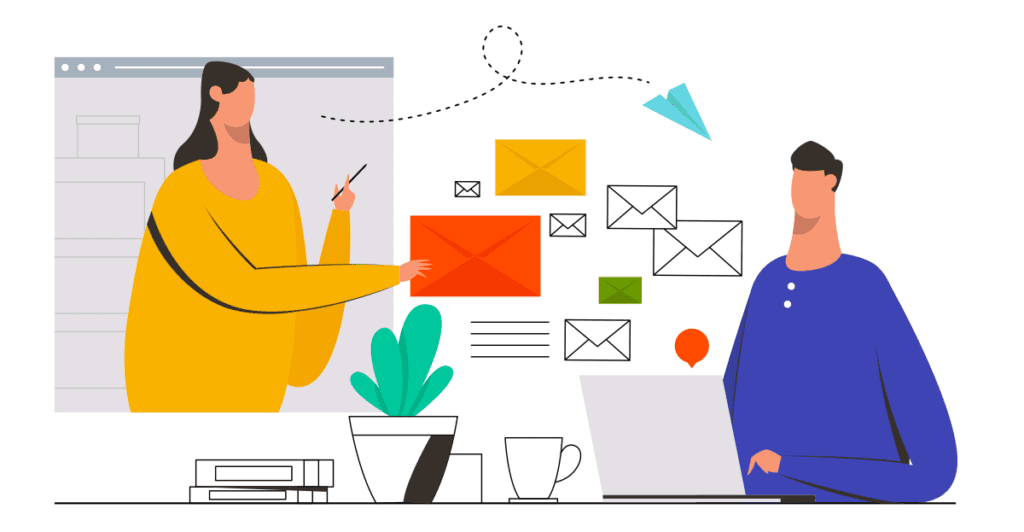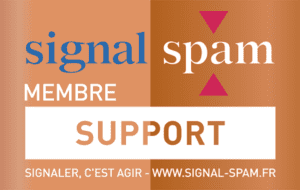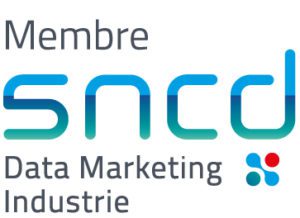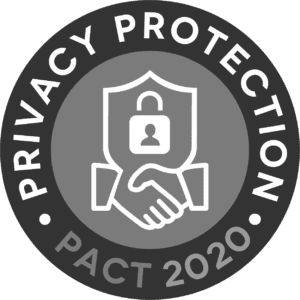Why email subject lines matter
Professionals receive dozens, even hundreds of e-mails every day. As a result, they often end up mentally filtering everything that lands in their inbox. Sometimes it only takes a split second to decide what to do with an e-mail: open it immediately, save it for later, or delete it without even glancing at it. And in this decisive moment, the subject line plays a major role.
The subject line is the “front door” to your message. If it doesn’t catch the eye, or if it seems too generic, your recipients are likely to hit the “trash” button sooner than you think. Conversely, a well thought-out, precise and personalized subject line can boost your open rate, the first key indicator of a campaign’s success. In a world where competition is fierce and readers’ attention spans are limited, optimizing email subject lines represents a powerful lever for standing out from the crowd, boosting performance and ensuring that the most important information reaches your audience. This is precisely what we’re going to explore in the following sections.
Common mistakes that ruin your opening rates
In most inboxes, promotional emails arrive in scattered order, often drowned out by other messages of varying degrees of interest. This fierce competition often comes down to a few words: the subject line. Yet many campaigns miss out on openings that are within reach, simply because of errors in wording or approach.
Objects that are too long or too vague
An interminable object is difficult to display on mobile and ends up truncated. As a result, the reader doesn’t have access to the full message, which can discourage him or her from going any further. Similarly, a blurred or overly generic subject line doesn’t arouse any curiosity: it offers no added value, no precise indication. It gives the impression of an impersonal campaign, far removed from the recipient’s real concerns.
Words that trigger spam filters
Certain expressions, often too racy, are automatically detected by e-mail providers. Phrases like “Win now”, “100% free” or “Exclusive offer” multiply the risk of filtering. Even if they don’t go straight to junk mail, these phrases can be reminiscent of “low-end” advertising, and can turn off an already wary reader.
The clickbait trap
The clickbait phenomenon (hyper-catchy but misleading subject lines) promises a lot, only to disappoint the reader once the email has been opened. While this practice may arouse initial curiosity, it also takes its toll in terms of trust: recipients will feel cheated and may not open future mailings. The subject line should arouse curiosity or highlight a clear benefit, without exaggeration or misdirection.
Lack of personalization
People are constantly in demand, and a total lack of personalization can be fatal. A standardized object that doesn’t take into account first name, field of activity or interests will never have the same impact as a tailor-made title. Recipients need to feel that the content is intended for them: a minimum of adjustment around their identity or situation often makes the difference.
The outward signs of spam
Excessive use of exclamation marks, capital letters or symbols(e.g.PROMO) alerts most filters and makes a bad impression. A recipient immediately perceives this type of object as an aggressive promotional message. In this case, it almost automatically goes to waste, without further ado.
The fundamentals of a striking object
To stand out from the crowd and make people want to click, email subject lines need to be clear, catchy and in tune with the recipient’s expectations. Here are the main principles to follow:
Brevity and clarity
A short subject line avoids interruptions on cell phones and allows you to get your main message across quickly. Don’t hesitate to get straight to the heart of the matter. For example, it’s better to write “Special offer on your marketing software” than “We have an exceptional offer that might interest you if you already use certain marketing software”.
Relevance
A recipient will only give credence to an e-mail if its title reflects a real interest or concrete benefit. The subject line should show the added value at first glance. Avoiding overly broad or abstract wording (such as “News and tips”) helps to reassure and arouses curiosity.
Customization
Inserting the recipient’s first name or referring to their sector of activity (e.g. “Marie, your accounting department can benefit from this”) has a positive impact. This little attention shows that the e-mail is not being sent “en masse” and that it meets a precise need.
Emotional
A hint of emotion or a sense of urgency can encourage openness. However, you need to strike the right balance between the desire to attract attention and the need to remain authentic. Exaggerated formulations risk producing the opposite effect, by appearing lacking in credibility.
With these basics, it becomes easier to write email subject lines that will capture attention at first glance and make people want to discover the rest of the message.
Advanced techniques to go further
Always test different variants
The method consists of proposing two subject variants for the same campaign, then comparing the open rates. The results help determine the most effective headline. Sometimes, the slightest change (wording, punctuation, addition of a first name, etc.) can significantly boost performance.
Symbols and emoticons
A cleverly placed symbol or emoji can be an eye-catcher among the mass of incoming e-mails. But be careful not to overdo it. A single visual element is often enough to arouse curiosity, without becoming too flashy.
The correct use of punctuation
Question marks invite reflection and create curiosity (e.g. “Would you like to boost your sales?”). Exclamation marks, on the other hand, should be used sparingly. Excessive punctuation can give the impression of marketing “shouting” and put off recipients.
Micro-segmentation
Sending the same email subject to your entire database is not always the best strategy. Behavioral analysis (clicks, purchases, centers of interest) enables us to segment the audience and adapt the subject line to each profile. Two different segments will rarely react in the same way to a single subject. It’s better to multiply small variations to stay as close as possible to each person’s expectations.
Impact on deliverability
A hastily written object can quickly turn into a liability, not only because it fails to catch the eye, but also because it risks being detected as undesirable. Filtering algorithms are more sophisticated than ever, analyzing content, structure and even the sender’s reputation.
Watch out for “spam” expressions
Key words that are too racy or commercial (e.g. “Win now”, “100% free”, “Offer not to be missed”) are a red flag. Some e-mail providers rate messages and, beyond a certain threshold, they end up in the spam folder.
Consistency between purpose and content
A promising subject line followed by an email that is totally at odds with the title (or too far removed from the advertised subject) triggers mistrust and frustration. Filters also take these discrepancies into account. A disappointed recipient is more likely to report the email as undesirable, which in the long term damages the sender’s reputation.
Sender reputation
Overall recipient behavior (open rate, click rate, marking as undesirable) influences the reputation of your domain. The higher this score, the less likely filters are to penalize your future mailings. On the other hand, if you receive too many reports, you run the risk of being permanently blacklisted.
The importance of commitment
A good subject line helps drive engagement (opens, clicks), which remains one of the key metrics for email providers. The more people interact with your mailings, the more likely your emails are to reach the inbox. Hence the need to offer a clear promise of information or value, right from the subject line, that really encourages people to read the content.
Case studies and practical examples
An “informative newsletter” emailing
Objective: share monthly tips on a specific topic (e.g. regulatory news in a B2B sector).
- Example subject: “Latest legal news: are you up to date?
- Why it works: the subject line is short and clearly states the topic (legal news). The question mark arouses curiosity, while promising useful information.
A promotional campaign
Objective: to promote a special discount or a new product.
- Example subject: “-25% on [Product name] for marketing professionals”.
- Why it works: the promise is immediately visible (“-25%”), the offer is targeted (“marketing pros”) and the subject is concise.
Post-webinar relaunch
Objective: to follow up on an online event and encourage people to take action (download the replay, book an appointment…).
- Example subject line: “Your replay is ready: optimize your email campaigns”.
- Why it works: the recipient knows immediately what he’s receiving (a replay) and sees the potential benefit (optimizing his own campaigns).
A sector-specific ebook offer
Objective: present a white paper on a niche theme.
- Sample subject line: “[White paper] 7 strategies to boost your B2B sales”.
- Why it works: the use of tags such as “[White paper]” clarifies the nature of the resource. The number (“7 strategies”) suggests a concrete list of tips.
Mention of a specific benefit
Objective: improve relevance and arouse interest with a title that points to a concrete result.
- Example subject: “Double your leads in 6 weeks: the Ediware method”.
- Why it works: the promise is clear (“double your leads”), the timeframe is short (“6 weeks”) and the “Ediware method” label lends credibility.
These examples demonstrate the impact of a precise, targeted approach. The reader immediately understands what he’s going to receive and perceives the benefit he could derive from it. In each case, the subject line plays its role as a primer: preparing the ground and making the reader want to open the email.
To conclude
The subject of an e-mail acts like an open sesame: it can open the doors of the inbox wide or, on the contrary, close them mercilessly. A few well-chosen words make all the difference: a higher open rate generates more clicks, then conversions, and boosts the overall reputation of your campaigns. Conversely, a sloppy or overly racy headline will scare off even the most inquisitive readers.
To improve your performance over the long term, it’s not enough to apply these tips once and for all. Every target, every context, every time of year deserves its share of adaptations. Opening and reading habits evolve, and the competition never stops innovating. Regularly testing and adjusting your e-mail subject lines is therefore the best approach.
The important thing is to see the email subject not as a detail, but as a real vector of engagement. As soon as you decide to focus on this first impression, you start to build a relationship of trust with your readers. To go further, try out different formats, vary the degree of personalization, and analyze the results of each mailing. This will guide you towards a more powerful style, perfectly in tune with your audience.
If you’d like us to help you, or if you’d like to take advantage of a cutting-edge tool for your email campaigns, our team at Ediware will be delighted to advise you. Optimizing the subject line is the first step on the road to smarter, more profitable marketing.






